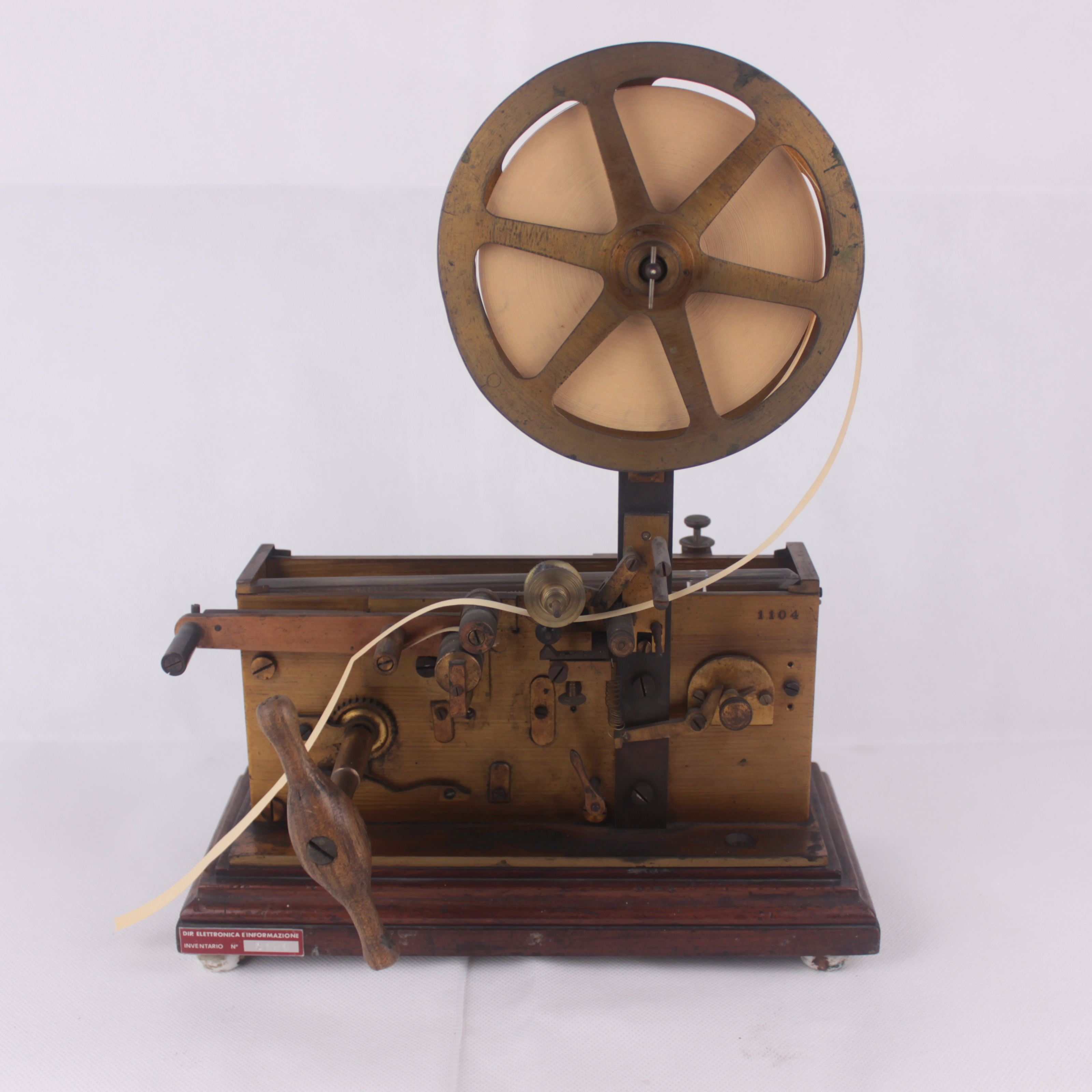
Telegraph receivers are tools that are used to receive Morse signals through an electromagnetic phenomenon. A nib transcribes the points and lines that make up the Morse alphabet thanks to the action of an anchor that is attracted to an electromagnet traversed by the electrical signal sent by the transmitting station.
Insights
The transmission with the Morse system could be performed regardless of the weather conditions, even at night or with poor visibility. The main challenge was keeping the copper wire network efficient and electrically insulated over long distances. Nevertheless, for over half a century, the electric telegraph dominated unchallenged. Submarine cables were laid in the Mediterranean, like the one between Brindisi and the Egypt to serve the Indian Mail in 1873. Subsequently, cables that crossed the Atlantic Ocean to connect Europe with the Americas were also laid.
There were some interactions between the telegraphic service and the telephone service. One of these was the possibility, in the 1930s, to deliver a telephone message with the telegraphic service to those who did not have a telephone line. In this case, the Telephone Commissions Service acted as a bridge between the two services.
In the 1950s there was a similar service, named "Fonotel", provided by post offices and other public places (e.g., tobacconists) equipped with a public telephone. This service had a fixed cost per message, as long as it consisted of 16 or less words.
Radiotelegraphy, s special branch of telegraphy for the general public, had developed in 1930s. It was a telegraphy service "on the air" between moving means of transport, and between the boats and the mainland. Thus there was the "Telegram-train", which allowed messages to be sent from moving trains.